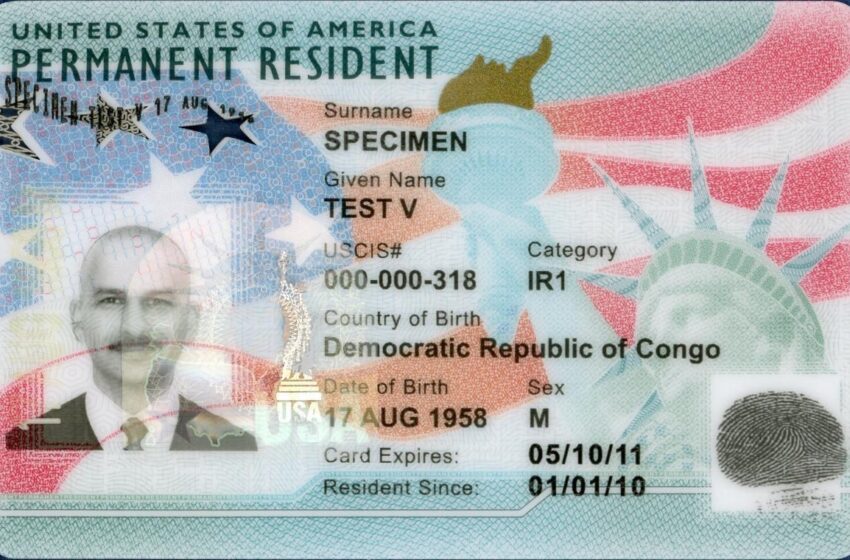1.2 million Indian professionals stuck in green card backlog: Report

More than one million Indians are waiting in employment-based immigration backlogs, highlighting problems in the US immigration system, according to a media report citing an analysis of US government data.
Many highly skilled professionals from India face potentially decades-long waits to gain permanent residence (a green card) due to a per-country limit and the low annual quota, Forbes reported citing US Citizenship and Immigration Services (USCIS) data.
Over 1.2 million Indians, including dependents, are waiting in the first, second and third employment-based green card categories, Forbes reported citing a National Foundation for American Policy (NFAP) analysis of USCIS data. The data reflect approved I-140 immigrant petitions as of Nov 2, 2023.
READ: US taking steps to end green card backlog: White House (February 29, 2024)
NFAP analyzed the data and calculated the dependents to arrive at an estimated backlog in the top three employment-based immigration categories (excluding “other workers”).
First Preference: According to USCIS, 51,249 principals are in the employment-based first preference, also known as EB-1. NFAP estimates an additional 92,248 dependents for a total of 143,497 Indians in the first preference backlog. EB-1 includes workers with extraordinary ability, outstanding professors and researchers and multinational executives or managers.
Second Preference: According to USCIS, as of Nov 2, 2023, there were 419,392 principals in the employment-based second preference, also known as EB-2. NFAP estimates an additional 419,392 dependents for a total of 838,784 Indians in the second preference backlog. EB-2 includes professionals holding an advanced degree and persons with exceptional ability in the sciences, arts or business.
READ: Lawmakers advocate axing green card country caps (March 13, 2024)
USCIS data from 2020 suggest that the Indian backlog in the EB-2 category rose by more than 240,000 or 40% in approximately three years.
Third Preference: According to USCIS, 138,581 principals are in the employment-based third preference, also known as EB-3. NFAP estimates an additional 138,581 dependents for a total of 277,162 Indians in the third preference backlog. EB-3 includes skilled workers and “members of the professions whose jobs require at least a baccalaureate degree.”
According to the NFAP’s analysis of USCIS data, there are 1,259,443 Indians in the top three employment-based immigration categories as of Nov 2, 2023. USCIS says the agency’s data does not “identify or exclude multiple petitions by the same petitioner or beneficiary.” However, NFAP based its estimates of dependents on the ratio of employment visa principals to dependents in FY 2021 and FY 2022 for all countries of origin.
READ: New bill eliminates country caps for green cards; reforms H-1B program (May 11, 2023)
That would underestimate dependents for Indians because their long waits in the backlog mean they would be older than other employment-based immigrants and more likely to have spouses and multiple children.
Without Congressional action, the backlog will continue to increase, Forbes noted. In 2020, the Congressional Research Service (CRS) estimated the backlog for Indians in the top three employment-based green card categories would reach 2,195,795 individuals by FY 2030 and take 195 years to eliminate the backlog.
According to the May 2024 Visa Bulletin, Indians can receive their green card in the employment-based second preference only if their application was filed before May 15, 2012. While that provides a general sense of an applicant’s wait time, for Indians, the dates in the Visa Bulletin often do not advance monthly and sometimes may regress, Forbes noted.
Two parts of US law created the long wait times for employment-based immigrants, according to Forbes. In 1990, Congress set the annual limit for employment-based green cards at 140,000, including dependents, a level far from high enough since the demand for technical talent has exploded in recent decades due to the internet, smartphones, AI, e-commerce and other innovations.
READ: Indian American lawmakers call for immigration reform to reduce green card backlog (December 21, 2022)
At the same time, lawmakers retained a per-country limit of 7%. The per-country limit has most harmed highly skilled professionals from India, China and the Philippines due to larger populations.
Indians have suffered the brunt of the law’s impact. Due to the per-country limit, only 7,820 Indian immigrants received employment-based green cards in the EB-2 category in FY 2015, even though employers submitted tens of thousands of green card applications for Indians years earlier than individuals from other countries who received green cards that year.
In 2022, Senator Charles Grassley (R-IA), supported by Senate Republican Leader Mitch McConnell, blocked a reform that would have ended the long waits for many employment-based immigrants.
Forbes cited analysts as saying Grassley’s blocking of the exemption for highly educated immigrants caused potentially irreparable harm to America’s ability to attract and retain foreign-born scientists and engineers in the United States.
Beyond the hit to US competitiveness and companies’ ability to retain talent in the United States, the long waits for employment-based green cards exact a human toll, Forbes noted.
